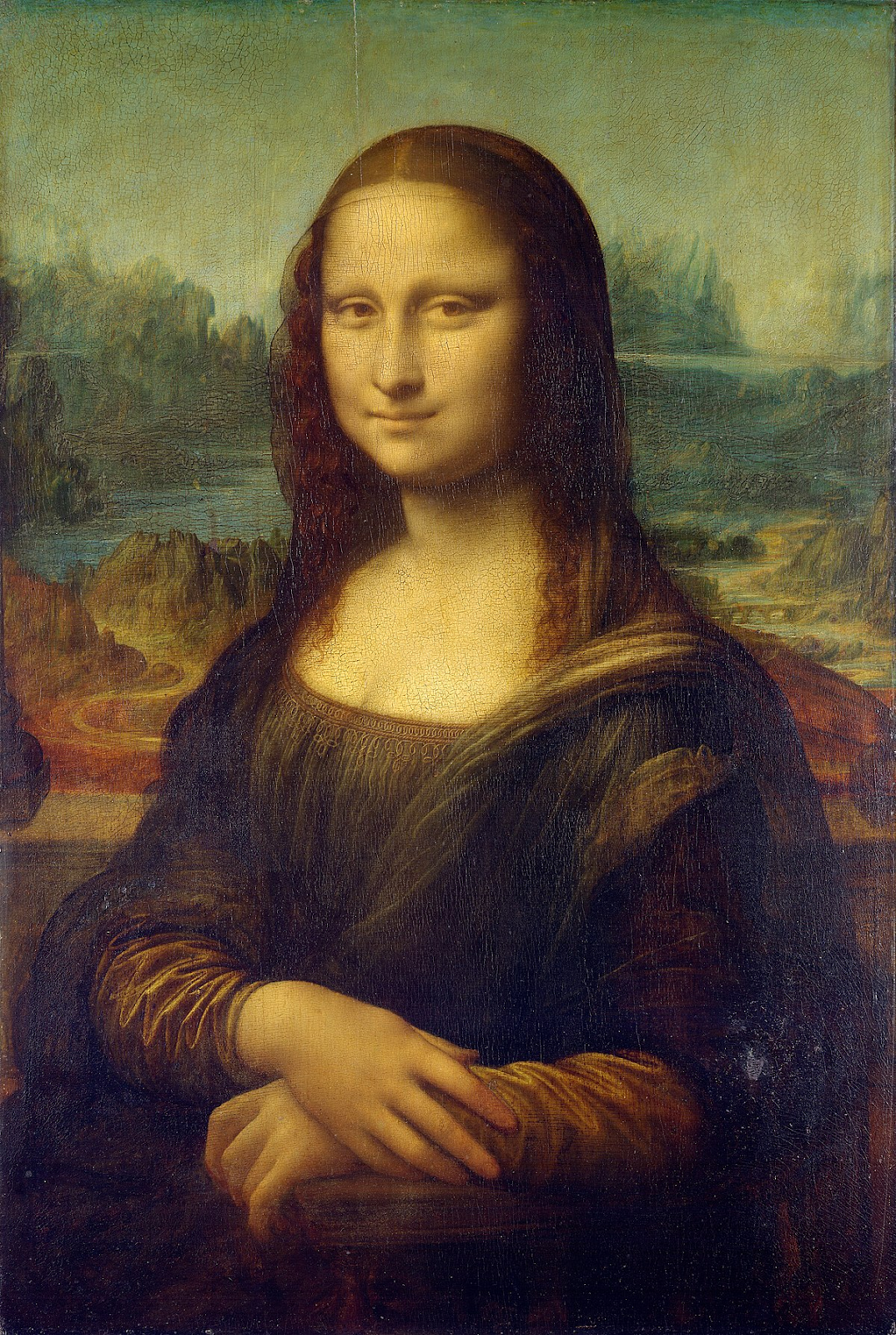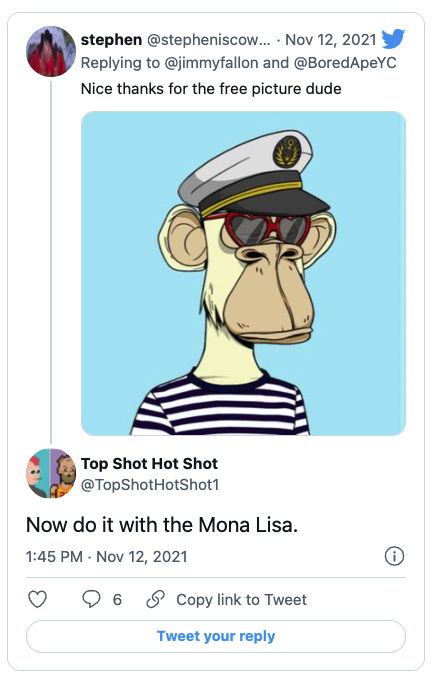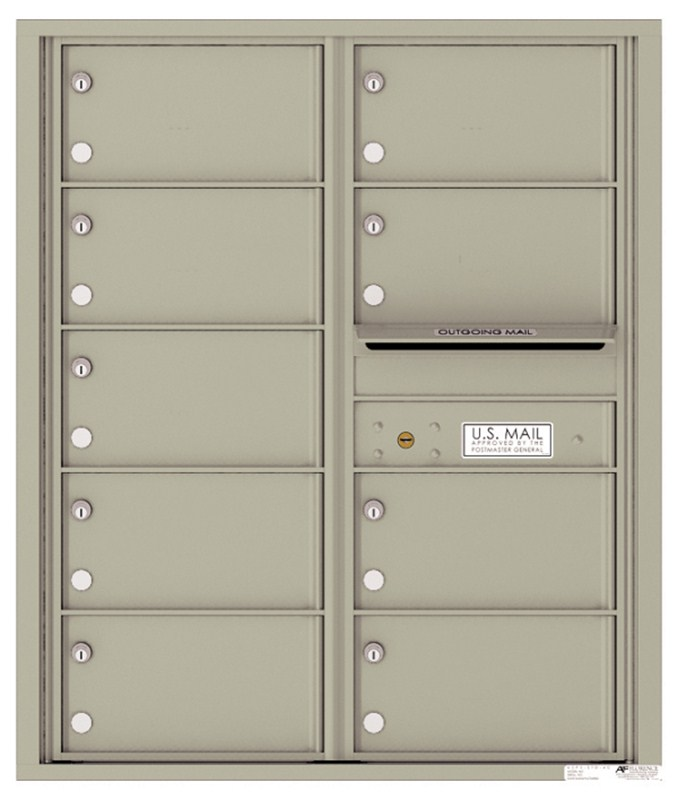While some people are completely won over by NFTs and others think they’re nothing more than overpriced JPEGs, the vast majority are somewhere in between: intrigued but baffled; willing to get involved but unsure where to start.
Gifting an NFT is a great way to introduce someone to the world of NFTs.

Unfortunately there’s still a lot of confusion shrouding NFTs—not just around the ‘what’ and the ‘why’ but also the more mundane ‘how’: how are they minted? How are they transacted? And how on earth can you get your hands on one?
There will be many who want to gift NFTs but probably won’t—not because they can’t afford them or think they won’t be well received, but simply because they don’t know how. This brief guide is for them.
What is an NFT?
Feel free to skip the next two sections if you’re already familiar with NFT basics.
An NFT is a non-fungible token. “Fungible” refers to any good that can be replaced by an identical good. Examples of these include currencies ($5 = $5 no matter which bills are used) and commodities (a pound of raw sugar is equivalent to any other pound of raw sugar).
These goods are interchangeable.

Raw sugar and US dollars are both examples of fungible (i.e. interchangeable) goods.
Goods that are non-fungible are unique. Think rare baseball cards, race horses, and the Mona Lisa. Just as there is only one Mona Lisa painting, there is only one of any given NFT.

The part about NFTs that tends to trip people up is that technically they’re just a unit of data stored on the blockchain. That’s the NFT. It’s a unit of data that represents a digital artwork or other forms of media such as video and audio.
Think of an NFT not as the digital asset itself, but rather a unique digital signature that proves ownership of the asset. When you understand NFTs this way you’ll see why they can’t simply be copied and pasted.

In the words of MoonPay’s co-founder and CEO Ivan Soto-Wright, NFTs are “a unique guarantee of authenticity as they cannot be copied, stolen or replicated. You bought it, you own it. You can sell it, too.”
And, of course, you can gift it.
Who can you give NFTs to?
The beauty of NFTs is that they’re for everybody. Anyone with access to an internet connection can get a digital wallet, which is all that’s needed to own an NFT.
By design, the blockchain networks on which NFTs are built (Ethereum is the most popular but others are catching up) thrive on decentralization, or the distribution of control to all users. In other words, the more users the better. Legendary computer scientist Ralph Merkle had this to say about the Bitcoin blockchain:
It lives because anyone, anywhere, can run a copy of its code. It lives because all the running copies are constantly talking to each other. It lives because if any one copy is corrupted it is discarded, quickly and without any fuss or muss.
That’s why the crypto community tends to be so welcoming to newcomers. For crypto, it’s literally a case of “the more the merrier''—as more users are introduced to a network, the stronger it grows. Transacting an NFT fuels the network on which it’s created (for an in-depth look on this topic, see our article on Ethereum gas fees)

So the great thing about NFTs is that those who have them are not only owners of a digital asset, but also participants in the blockchain technology underpinning crypto and its explosive development. Gifting an NFT is akin to giving ground-level access to a fast-developing technology.
If that’s not a compelling enough reason to gift an NFT, then consider the fact that some offer exclusive benefits to their owners.
The NFT collection Doodles, for example, gives holders the ability to participate in the community treasury by voting for new experiences, activations, and campaigns. The Kings of Leon NFT album “NFT Yourself,” available on OpenSea, comes with a digital album download, collectible album artwork, and a limited edition NFT Golden Eye Vinyl.
You may still be wondering whether NFTs are really all that suitable for that special someone. Only you can make that call but NFTs cater to all age ranges, and due to the explosion of popularity over the last few years, there’s now probably something out there for everybody.
Who can you give an NFT to? Just about anyone.
How to gift NFTs in 3 easy steps
It’s easier to gift an NFT than you might think–it’s just that the mere mention of crypto wallets and cryptocurrency exchanges (so many things to consider) tends to put people off. It shouldn’t. In fact, the whole process can be reduced to three easy steps and takes about five to ten minutes from start to finish.
1) Get the recipient's wallet address
A public wallet address, also known as a public key, is simply a code that allows a user to receive cryptocurrencies and NFTs. It’s sort of like a digital mailbox.
“The major characteristic of a mailbox,” writes Daniel Drescher in Blockchain Basics, “is that its location is known and hence anyone can put something in but only the owner can open it with a key.”
In technical parlance this is called public-key cryptography, or asymmetric cryptography–a simple concept that in large part accounts for why blockchain transactions are so simple.

Wallet addresses are typically around 30-40 characters long and include both numbers and upper- and lower-case letters. Don’t worry, your wallet or exchange will allow you to copy and paste the destination address—no memorization is required
Getting the public wallet address right is by far the most important step to gifting an NFT.
If the address is invalid, then the transaction won’t go through. But if the address is wrong (i.e., the wallet address is owned by someone else) then the NFT could be gone forever because you will be sending the NFT to the owner of that wallet. Luckily it’s rare for a small typo to result in another correct address, but it’s still worth being extra careful.
Since a public wallet address is, well, public, it's perfectly reasonable to ask someone for theirs. It can be retrieved from any digital wallet simply by clicking “receive” and copying the corresponding address.
Pro tip: If you want to be extra sure a wallet address is correct, then you can send a very small amount of crypto and confirm with the recipient that it was received.
What if the recipient doesn’t have a wallet address?
If you’re gifting an NFT to someone new to crypto, odds are they haven’t set up a wallet address.
Setting up a wallet address is incredibly easy and takes just a few clicks, but for security reasons it shouldn’t be done on someone else’s behalf since private keys should only be known to their owners. As they say in the crypto community, “no keys, no cheese.” In other words, if you don’t have full custody over your private keys, then you technically don’t own your crypto.
Instead, you could simply buy the NFT in advance and then help the recipient set up his or her wallet later. Setting up a wallet is simple and takes just a few minutes.
Pro tip: As a placeholder for someone without a wallet address, you can gift a printout of the NFT—just a little something to build anticipation!
2) Choose the NFT and send
If getting the correct wallet address is the important step, then choosing which NFT to gift is the fun one.
Most NFT marketplaces (e.g. OpenSea, Rarible, NBA Top Shot), will have catalogs of various collections for you to explore, and some will even let you sort by price. This allows you to see the "floor price", or lowest price, in a given collection, which is often a good indicator of whether the collection is within your budget.
For a more in-depth explanation of how to buy an NFT, see our article How to buy your first NFT in 5 steps.
Once the NFT is secure in your wallet (and assuming the recipient already has a public wallet address) you’re ready to send it.
Be aware of transaction fees
If you’re gifting an Ethereum NFT, you’ll need to pay attention to the gas fees at the time of purchase and transfer. The good news is there are several tools you can use that track gas fees in real time.
Should you choose to gift a Solana NFT, you can rest assured the transaction fees will be minimal, costing just fractions of a cent for each transaction.

Solana wallets such as Phantom will allow you to preview the transaction fees before sending your NFT.
Pro tip: If this is your first time buying and sending an NFT then Solana may be the easier choice since you don’t have to wait for specific times for transaction fees to be lower.
3) Confirm receipt
Once you’ve established the recipient’s wallet address and sent the NFT of your choice, the only thing left to do is to confirm the NFT has been received.

Pro tip: If you don’t wish to ask the person upfront (say, if the gift is a surprise), you can do this by checking the block explorer of the corresponding NFT’s blockchain. If you sent an ETH NFT you can check Etherscan, or you can use Solana Explorer for SOL NFTs.
Which NFTs make for a good gift?
While some of the most iconic NFTs are well outside most people’s price range (CryptoPunks, the pixelated avatars that are being snapped up by wealthy buyers, have historically sold for well over $100,000) there are countless affordable and gift-worthy collections to choose from.
Keiken
If you’re looking for something a bit different, the digital artists that go by the name “Keiken” (Japanese for “experience”) have created some ground-breaking artwork depicting hypnotic scenes from the metaverse.

ZED RUN
One for the gamers, ZED RUN is a blockchain-based digital horse racing platform. The price of a horse varies by breed, but there’s still some affordable options that make for a great gift.
Doodles
A collection of 10,000 avatars, each with their own unique traits. What makes Doodles special is that it’s a collaborative project: Doodle owners are able to participate in the community by voting for new experiences, activations, and campaigns.
CryptoKitties
These cute felines have taken the internet by storm. The “oh-so-adorable creatures”, as their developers call them, can be bred, traded, and used to unlock rare “cattributes”. Don’t be daunted by some of the high prices. There’s a huge supply of CryptoKitties, the cheapest currently going for around 0.005 ETH (~$20USD)
Space Poggers
A collection of “quirky spacefaring animals" that belong to over a dozen tribes, each containing 1,000 unique Poggers.

Alphabetty Doodles
Just as cute as a CryptoKitty or Space Pogger but with an added twist: Alphabetty Doodles can help teach the alphabet—an early example of how NFTs can be used as learning tools.
As you browse through the major NFT marketplaces you’ll undoubtedly be dazzled by some of the assets on offer. In principle, a good NFT is a good NFT gift, so why hesitate? If something fits your budget and you know someone who may want it, don’t let the logistics get in the way of making the next special occasion one to remember.
How to buy NFTs for gifting
MoonPay's NFT Checkout solution makes it easier than ever to buy NFTs for gifting directly using a credit card, with fewer roadblocks and dropout points.
We've removed excessive steps in the purchasing process, including needing to acquire the necessary crypto first and transfer between multiple exchanges and wallets.
Just choose the NFT you wish to purchase and enter your card details to complete your transaction.

.png?w=3840&q=90)




